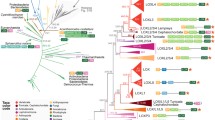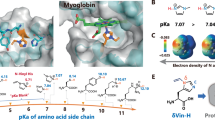Abstract
Lysyl oxidase (LOX) is a copper-dependent amine oxidase enzyme that catalyzes the formation of crosslinkages of collagen and elastin in connective tissues by oxidative deamination of lysine. Using site-directed mutagenesis, Histidine 303 has been shown to be a key residue that acts as the necessary catalytic base for this enzyme to function properly. Histidine 303 was mutated to isoleucine to remove catalytic activity and to aspartate and glutamate, respectively, in order to provide alternate residues that could act as a general base that could maintain catalytic activity. Overexpression of the H303I mutant yielded 3.9 mg of enzyme per liter of media, the H303D mutant yielded 3.3 mg of enzyme per liter of media, and the H303E mutant yielded 3.0 mg/L of media. Overexpression of wildtype LOX yielded 4.5 mg/L of media, which is a slight improvement from previous yields. Total copper incorporation for H303I was calculated to be 68% and no copper was detected for the H303D and H303E mutants. As LOX requires the self-processed cofactor lysyl tyrosyl quinone (LTQ) for activity, total LTQ content was obtained by reacting the enzyme with phenylhydrazine and using the previously reported extinction coefficient of 15.4 mM/cm. LTQ content for the wildtype enzyme was determined to be 92%, for H303I the total LTQ content was determined to be 36%, and no LTQ was detected for the H303D and H303E mutants. No catalytic activity was detected for any mutants when compared to the wildtype which has a previously reported activity of 0.11 U/mg. Comparison of excitation–emission matrices (EEM) of each of the mutants as compared to the wildtype indicate that all the mutations cause a change in the internal environment of the enzyme, albeit to varying degrees, as evidenced by the observed shifts.









Similar content being viewed by others
Abbreviations
- LOX:
-
Lysyl oxidase
- ECM:
-
Extracellular matrix
References
Csiszar K (2001) Lysyl oxidases: a novel multifunctional amine oxidase family. Prog Nucleic Acid Res Mol Biol 70:1–32
Kagan HM, Li W (2003) Lysyl oxidase: properties, specificity, and biological roles inside and outside of the cell. J Cell Biochem 88:660–672
Smith-Mungo LI, Kagan HM (1998) Lysyl oxidase: properties, regulation and multiple functions in biology. Matrix Biol 16:387–398
Kagan HM (2000) Intra- and extracellular enzymes of collagen biosynthesis as biological and chemical targets in the control of fibrosis. Acta Trop 77:147–152
Panchenko MV, Stetler-Stevenson WG, Trubetskoy OV, Gacheru SN, Kagan HM (1996) Metalloproteinase activity secreted by fibrogenic cells in the processing of prolysyl oxidase. Potential role of procollagen C-proteinase. J Biol Chem 271:7113–7119
Barker HE, Cox TR, Erler JT (2012) The rationale for targeting the LOX family in cancer. Nat Rev Cancer 12:540–552
Cox TR, Gartland A, Erler JT (2016) Lysyl oxidase, a targetable secreted molecule involved in cancer metastasis. Cancer Res 76:188–192
Lopez KM, Greenaway FT (2011) Identification of the copper-binding ligands of lysyl oxidase. J Neural Transm 118:1101–1109
Wang SX, Mure M, Medzihradszky KF, Burlingame AL, Brown DE, Dooley DM, Smith AJ, Kagan HM, Klinman JP (1996) A crosslinked cofactor in lysyl oxidase: redox function for amino acid side chains. Science 273:1078–1084
Dooley DM (1999) Structure and biogenesis of topaquinone and related cofactors. J Biol Inorg Chem 4:1–11
Mure M, Mills SA, Klinman JP (2002) Catalytic mechanism of the topa quinone containing copper amine oxidases. BioChemistry 41:9269–9278
Gacheru SN, Trackman PC, Shah MA, O’Gara CY, Spacciapoli P, Greenaway FT, Kagan HM (1990) Structural and catalytic properties of copper in lysyl oxidase. J Biol Chem 265:19022–19027
Smith MA, Gonzalez J, Hussain A, Oldfield RN, Johnston KA, Lopez KM (2016) Overexpression of soluble recombinant human lysyl oxidase by using solubility tags: effects on activity and solubility. Enzym Res 2016:5098985
Palamakumbura AH, Trackman PC (2002) A fluorometric assay for detection of lysyl oxidase enzyme activity in biological samples. Anal Biochem 300:245–251
Jung ST, Kim MS, Seo JY, Kim HC, Kim Y (2003) Purification of enzymatically active human lysyl oxidase and lysyl oxidase-like protein from Escherichia coli inclusion bodies. Protein Expr Purif 31:240–246
Bollinger JA, Brown DE, Dooley DM (2005) The formation of lysine tyrosylquinone (LTQ) is a self-processing reaction. expression and characterization of a Drosophila lysyl oxidase. BioChemistry 44:11708–11714
Herwald SE, Greenaway FT, Lopez KM (2010) Purification of high yields of catalytically active lysyl oxidase directly from Escherichia coli cell culture. Protein Expr Purif 74:116–121
Ouzzine M, Boyd A, Hulmes DJ (1996) Expression of active, human lysyl oxidase in Escherichia coli. FEBS Lett 399:215–219
Shah MA, Scaman CH, Palcic MM, Kagan HM (1993) Kinetics and stereospecificity of the lysyl oxidase reaction. J Biol Chem 268:11573–11579
Akagawa M, Suyama K (2001) Characterization of a model compound for the lysine tyrosylquinone cofactor of lysyl oxidase. Biochem Biophys Res Commun 281:193–199
Smyth DR, Mrozkiewicz MK, McGrath WJ, Listwan P, Kobe B (2003) Crystal structures of fusion proteins with large-affinity tags. Protein Sci 12:1313–1322
Tang SS, Trackman PC, Kagan HM (1983) Reaction of aortic lysyl oxidase with beta-aminopropionitrile. J Biol Chem 258:4331–4338
Acknowledgements
The authors wish to thank Dr. Danielle Solano and Luz Perez from the Solano research group at CSU Bakersfield for synthesizing and providing us with the LP-1-2 inhibitor.
Author information
Authors and Affiliations
Corresponding author
Rights and permissions
About this article
Cite this article
Oldfield, R.N., Johnston, K.A., Limones, J. et al. Identification of Histidine 303 as the Catalytic Base of Lysyl Oxidase via Site-Directed Mutagenesis. Protein J 37, 47–57 (2018). https://doi.org/10.1007/s10930-017-9749-3
Published:
Issue Date:
DOI: https://doi.org/10.1007/s10930-017-9749-3




